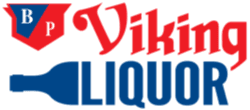Bourbon Popularity
Bourbon has become a rising star in the brown spirits category. With volumes up and major sales increases, the industry is taking notice. The upward trend caught many suppliers and distillers flat-footed and drove prices up. Now, with these supply issues slowly fading, bourbon, rye, and Tennessee whiskey are poised for a long and steady run.
Even after years of this intense growth, isn’t much more than half of the size that it was back in 1970, when the category stood at 36 million cases. The category should see many, many more years of growth, moving forward.
The Broad Market
Because it is so broad-based, this boom in bourbon, rye whiskey and Tennessee whiskey is what makes it particularly notable. Bourbon is one of the hottest things going and it’s entirely different than the vodka craze and the growth in wine. The boom is coming on the heels of an upsurge of people who enjoy cocktails over wine. At first, the trend grew among millennials, but has since crossed over to the Gen Xers and Baby Boomers too. Several brands have seen their formerly low profile brands gain traction, with flavor lineups such as apple, honey, cinnamon, and even coffee.
Regional Trends
Not limited to major urban markets, the bourbon phenomenon is spread out broadly across the country. Almost all of the major big volume brands have seen sales stay steady but the higher tier sales have been skyrocketing. Bourbon is already the fastest-growing spirit category and is poised to surpass vodka in the next few years. The industry has seen the category’s pricing sweet spot move above $20 as shoppers grow more comfortable with premium bourbons.
Luxuries Of Kentucky
Bourbon’s fastest growth has been coming from the super-premium segment, with the top five bourbon brands over $25 jumping by 13 percent in 2015. Now, the higher-end bourbon is driving sales. Major brands are scrambling to take advantage of the ultra-premium boom. Single malts emerged as the gold standard of Scotch 20 years ago and American whiskey usually mirrors that with the growth of small-batch and craft bourbon and rye whiskey. Some independently owned bourbon producers have been building a following by playing exclusively in the ultra-premium space.
Allocations and Backlash
Over five plus years or so, many distilleries have revved up production and storage capacity drastically, and those results are now starting to be felt. The industry players have been able to stash away a little more than they immediately needed, so we may see inventories increase and some additional older product. As a result, many labels that were tightly allocated, have become somewhat more attainable.
Relieving the shortage is a long and gradual process, however. While allocations are getting better, there is still room for improvement. Some cult bourbons are in such limited supply that they command special treatment.
Beyond Bourbon
The fact of the matter is, the boom is something of a misnomer, since the trend also extends to Tennessee whiskey, flavored whiskey and rye whiskey. Many of the new generation of bourbon drinkers first entered the category through the flavored segment, an area that’s now seeing some pandemonium. Rye has been on an uptick similar to it, although from a far smaller base. Rye has grown by about 25 percent a year in the United States and is now over a million cases and rye is picking up it’s dollar share.
The Future Of Bourbon
Suppliers believe that this growth trend will be sustained for many years. Most distilleries have made multi-million dollar investments in new or updated equipment and facilities to position themselves for the future. In the bourbon whiskey business, they have to figure out today what to set aside for years into the future. They have to decide now on how much whiskey to put away for their 25 year old bourbons and ryes.


